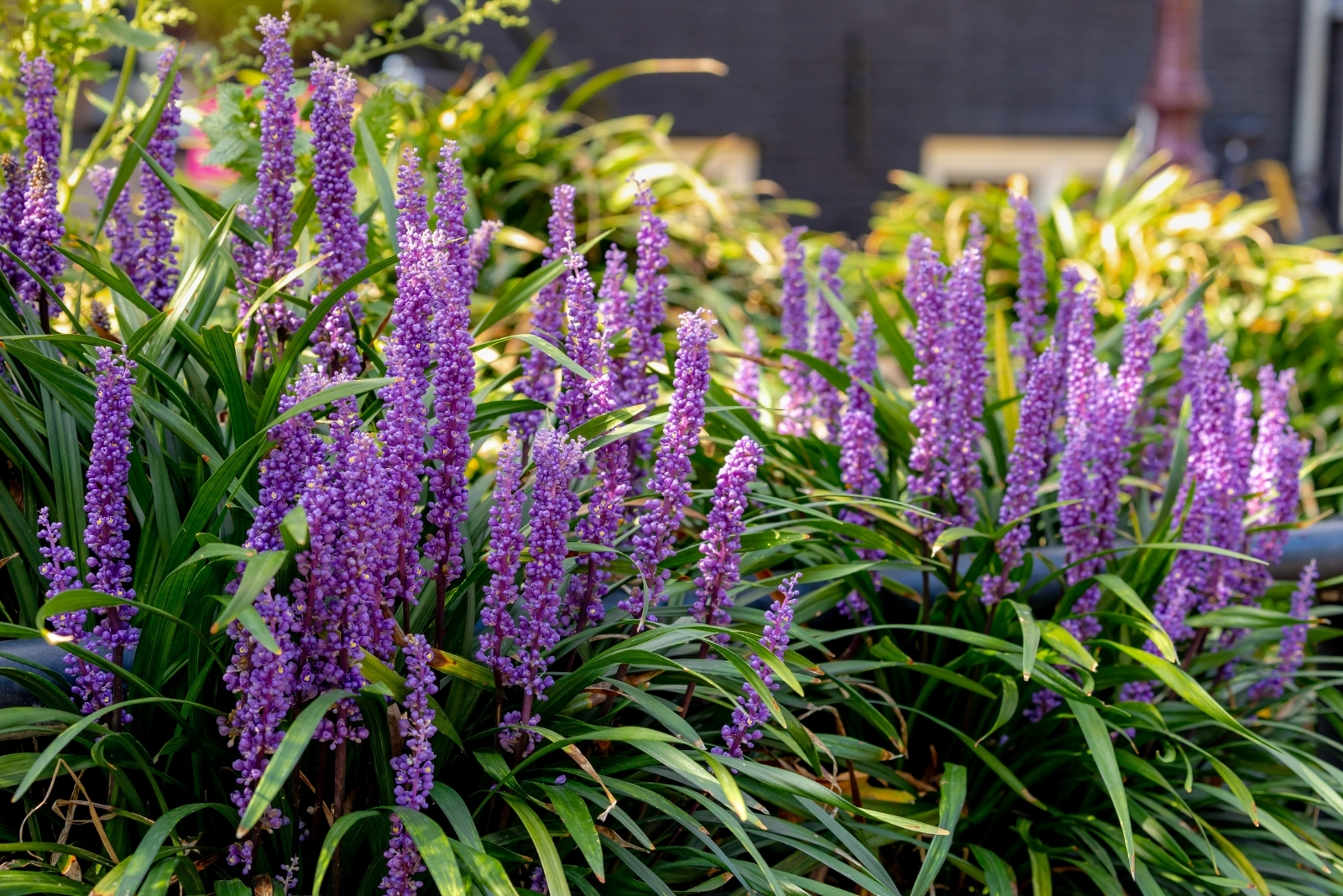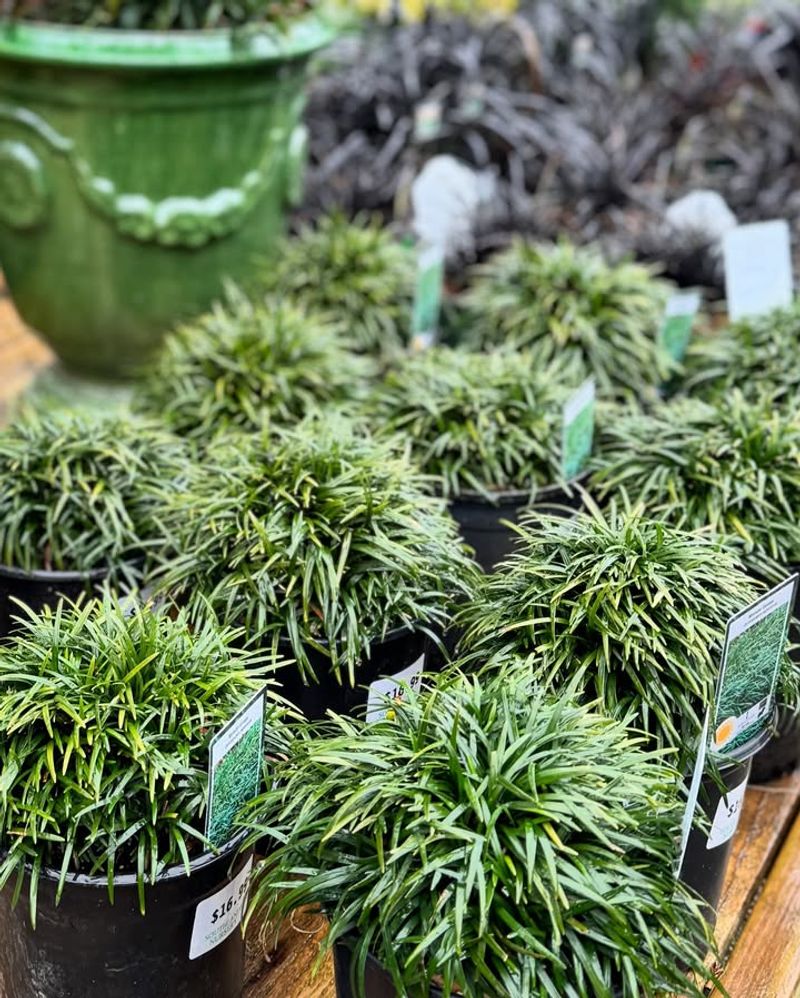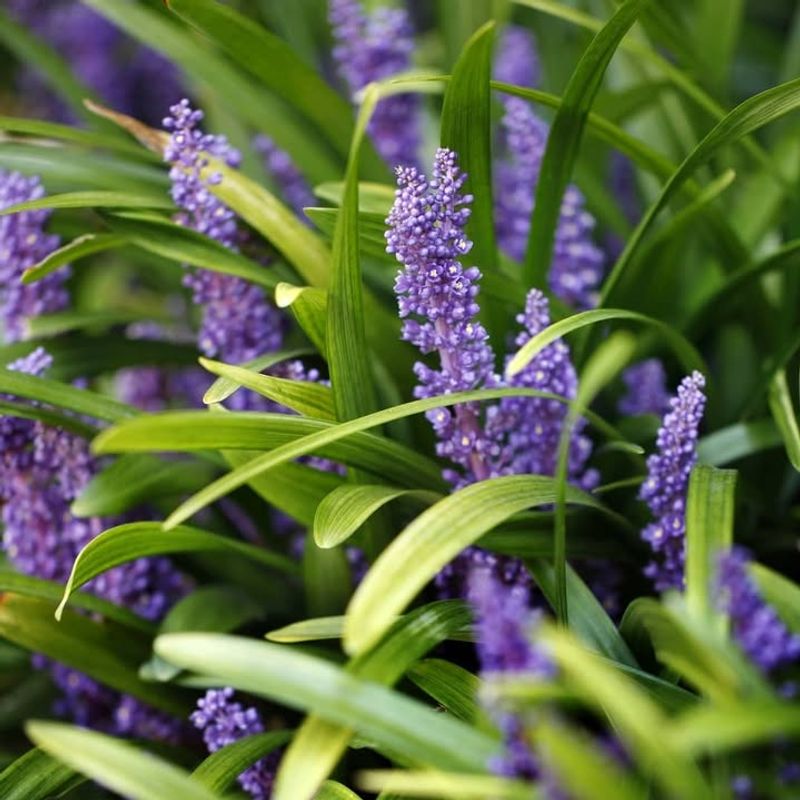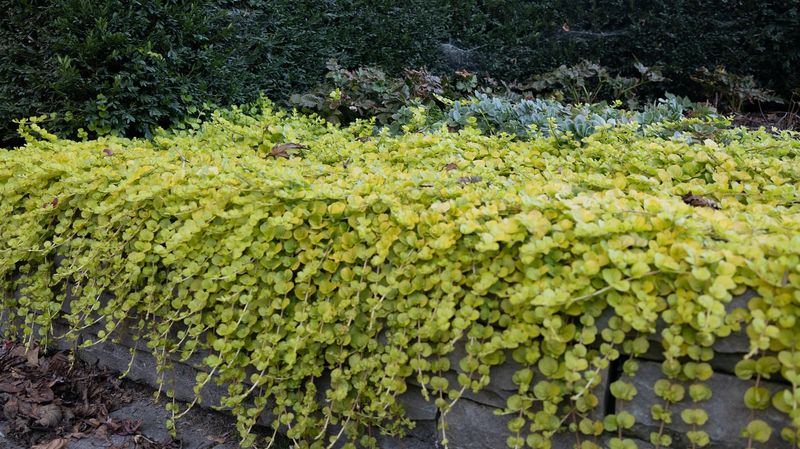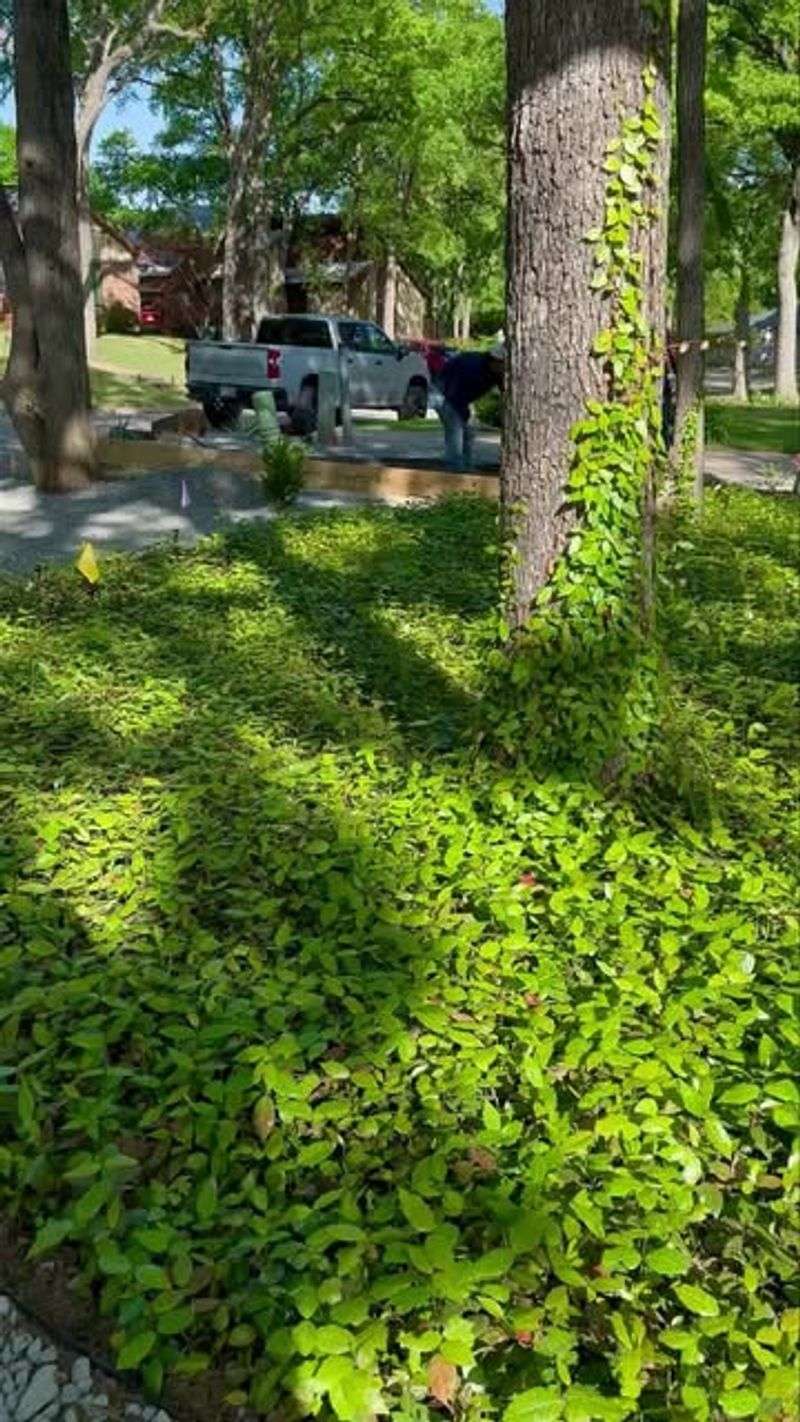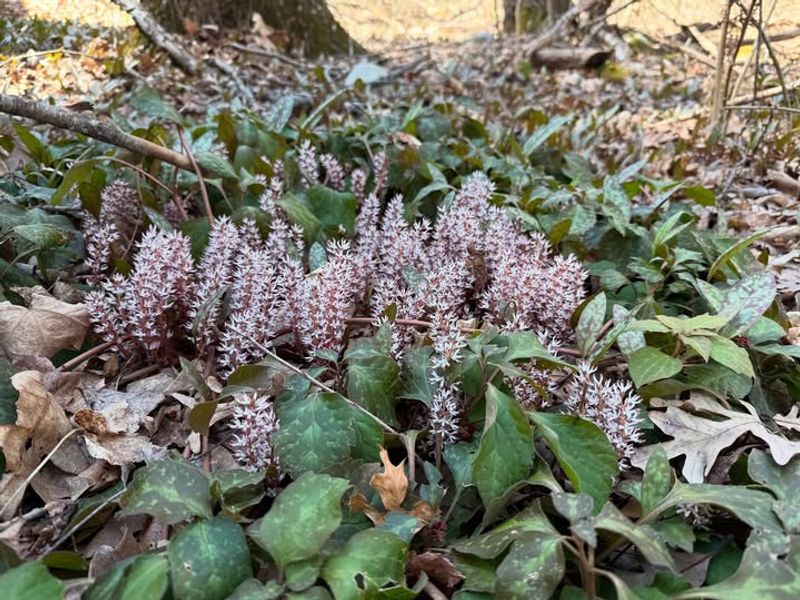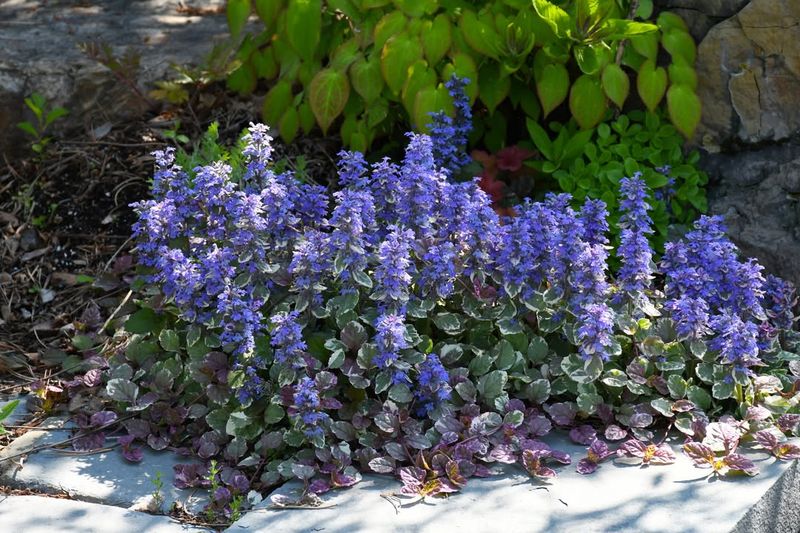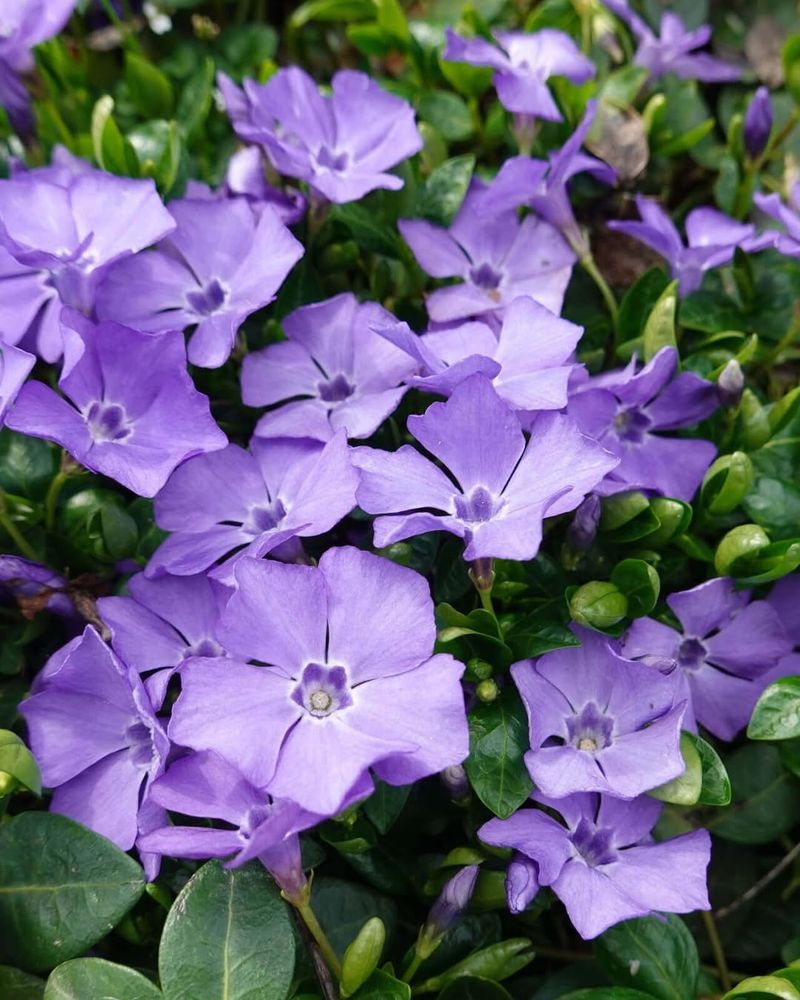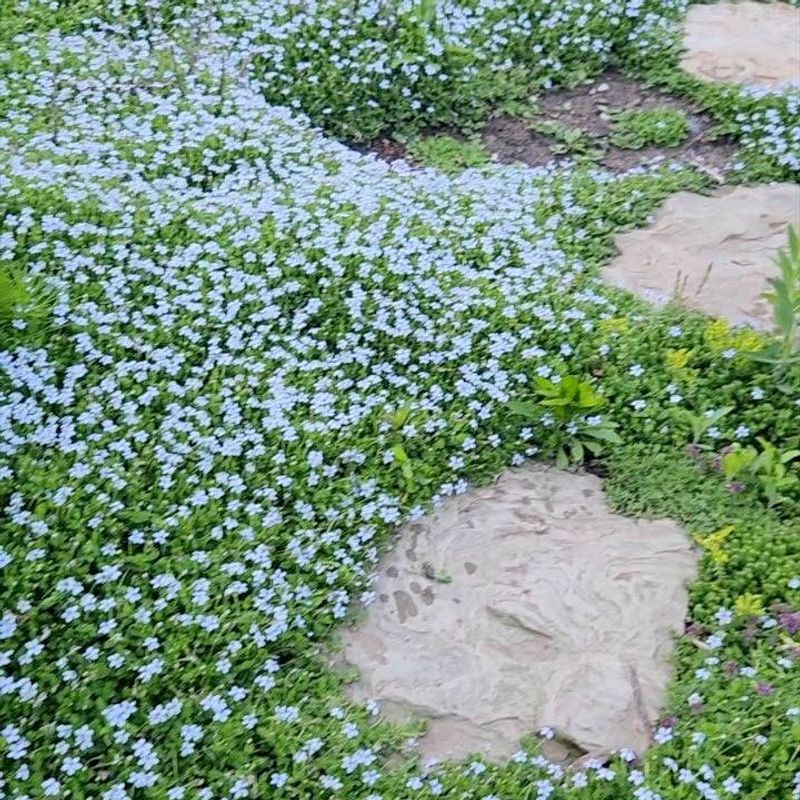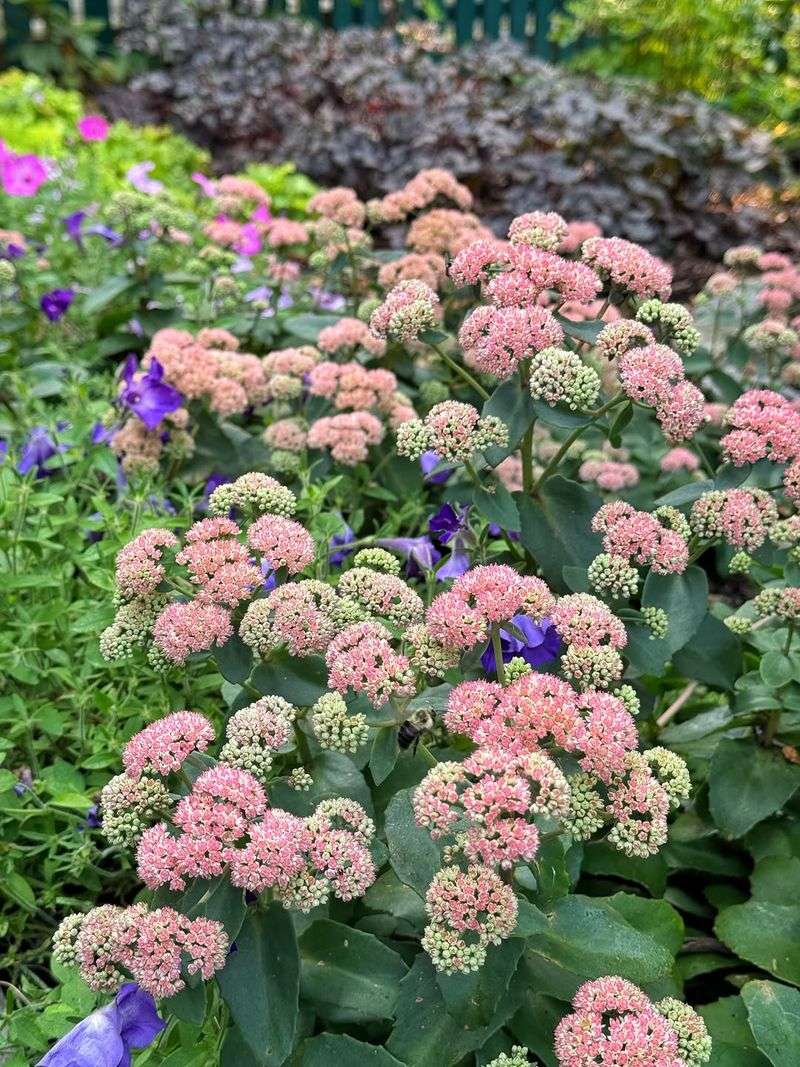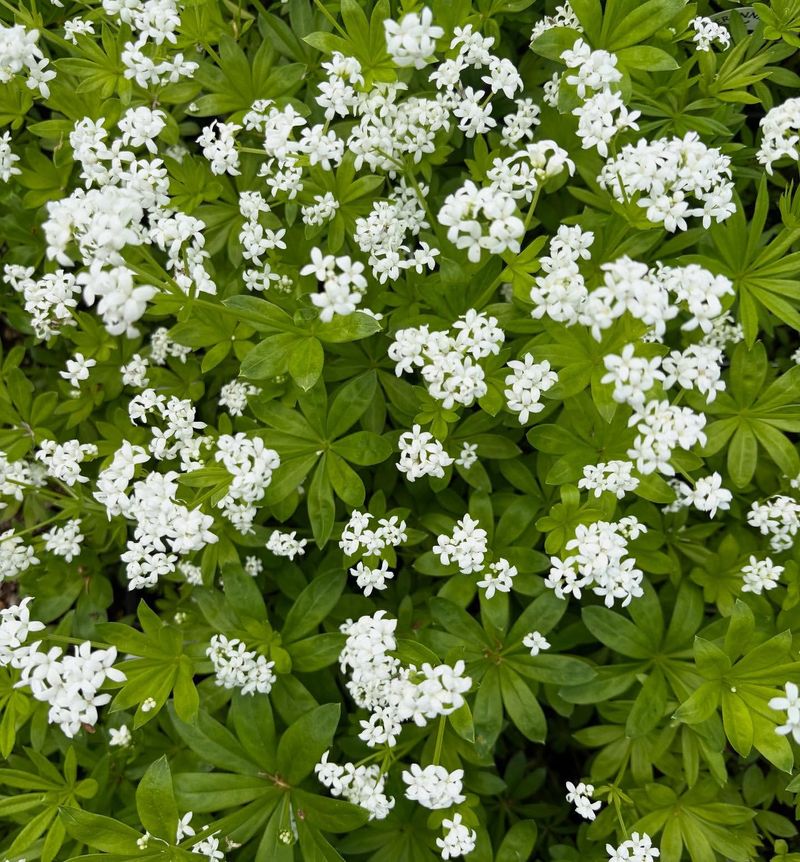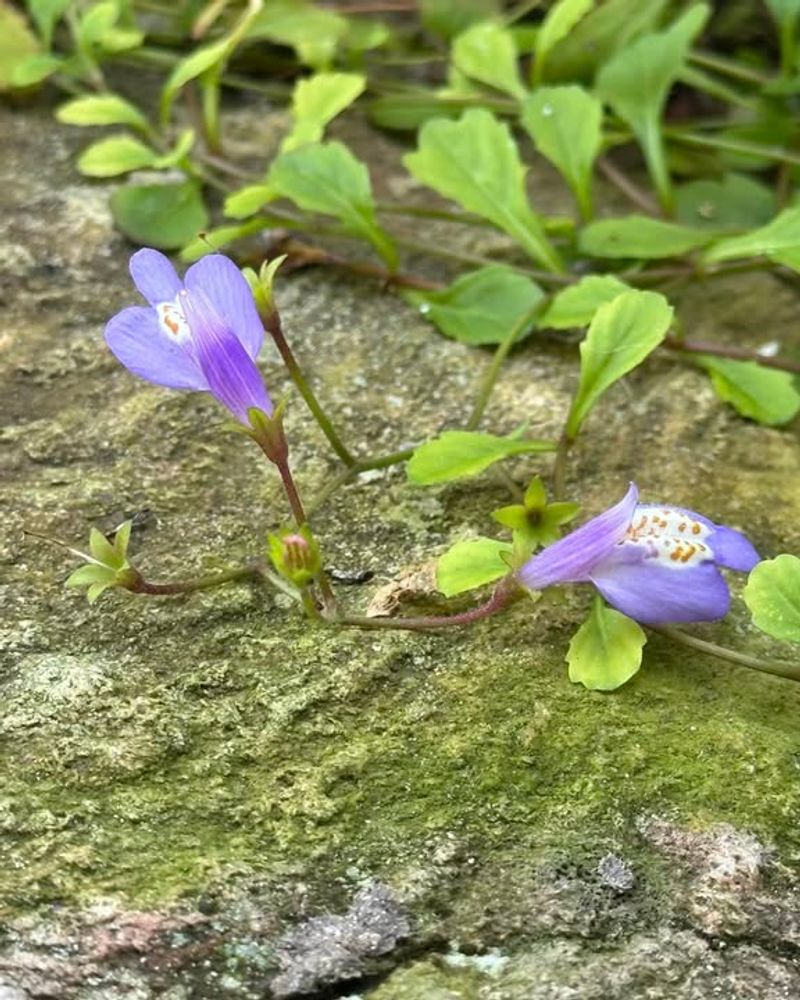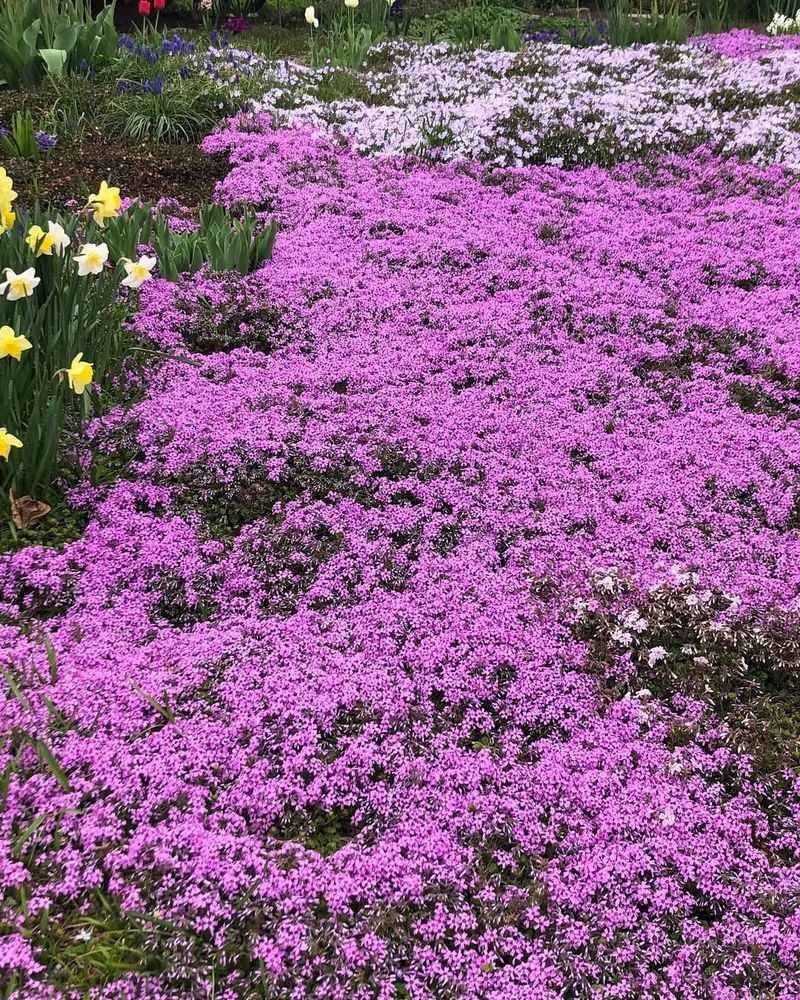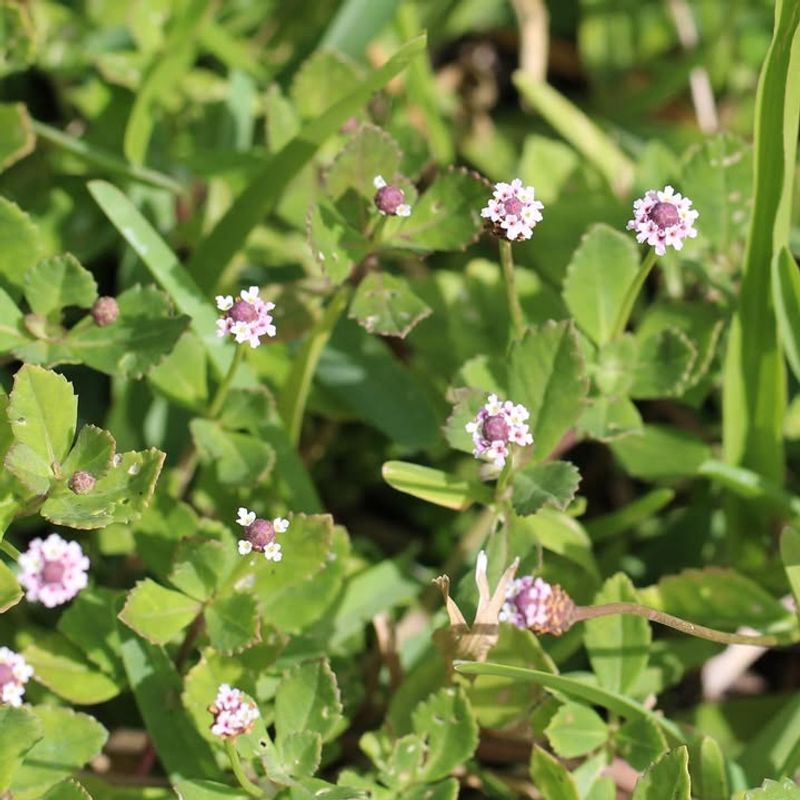Bare spots in a Georgia garden can feel like unfinished business. The right ground cover not only fills the gaps but also adds texture, color, and life.
It’s like giving your yard an instant makeover. Here are thirteen ground covers that will make your Georgia garden look complete and lush.
1. Mondo Grass
Dark green blades form thick carpets that stay lush year-round in Georgia landscapes. This low-maintenance plant loves shady spots where grass struggles to grow, making it ideal for under trees or along walkways.
Mondo grass spreads slowly but steadily, creating a neat appearance without constant trimming. It handles foot traffic better than many alternatives and rarely needs watering once established in Georgia soil.
Small purple flowers appear in summer, adding unexpected charm to your garden beds.
2. Liriope
Purple flower spikes shoot up like tiny fireworks above grass-like leaves each fall. Georgia gardeners love this tough plant because it tolerates both sun and shade while requiring almost zero attention throughout the year.
Clumps expand gradually to fill bare areas without becoming invasive or overwhelming nearby plants. The evergreen foliage provides texture and movement even during winter months when many other plants look dormant.
Deer typically ignore it, which makes it perfect for rural Georgia properties.
3. Creeping Jenny
Bright chartreuse leaves create a glowing carpet that lights up shady corners of Georgia yards. Round, coin-shaped foliage trails along the ground and spills beautifully over rocks or retaining walls, adding a playful touch to formal landscapes.
This fast-spreading plant fills gaps quickly, sometimes within just one growing season. It prefers moist soil and partial shade, thriving near downspouts or in naturally damp areas where other plants might rot.
Small yellow flowers add bonus color in late spring.
4. Asian Jasmine
Glossy green leaves form a dense, weed-blocking mat that Georgia homeowners rely on for problem areas. Unlike true jasmine, this variety doesn’t climb or produce fragrant flowers, but it creates a polished look that stays attractive in all seasons.
Once established, it handles Georgia’s summer heat without wilting or browning at the edges. Asian jasmine tolerates moderate foot traffic and grows well in both sun and partial shade.
Regular trimming keeps edges neat and prevents it from creeping into unwanted spaces.
5. Pachysandra
Whorled leaf patterns create an elegant texture that transforms deeply shaded Georgia gardens into lush retreats. This woodland native thrives where sunlight barely reaches, solving one of the toughest landscaping challenges homeowners face.
White flower spikes emerge in spring, though the real star remains the glossy evergreen foliage. Pachysandra spreads through underground runners, gradually forming a uniform carpet that suppresses weeds naturally.
It prefers acidic soil, which many Georgia properties already have, making establishment surprisingly easy.
6. Ajuga
Bronze-purple foliage adds dramatic color contrast to Georgia gardens before blue flower spikes steal the show in spring. Also called bugleweed, this ground cover spreads rapidly through runners, filling bare patches faster than many competing options.
The low rosettes of leaves hug the ground tightly, creating a living mulch that keeps soil cool and moist. Ajuga tolerates various light conditions, though it performs best with morning sun and afternoon shade in Georgia’s climate.
Butterflies frequently visit the nectar-rich blooms during flowering season.
7. Vinca Minor
Delicate purple flowers dance above trailing vines throughout spring in Georgia landscapes. Glossy evergreen leaves remain attractive long after blooms fade, providing year-round interest with minimal effort required from busy gardeners.
Vinca minor stays lower and less aggressive than its larger cousin, making it suitable for smaller spaces or near flower beds. It handles dry shade remarkably well, growing under mature trees where most other plants give up.
The trailing stems root wherever they touch soil, gradually expanding coverage naturally over time.
8. Blue Star Creeper
Tiny blue stars blanket this fine-textured ground cover each spring, creating a magical effect in Georgia gardens. The delicate appearance hides surprising toughness, as this plant tolerates light foot traffic and fills cracks between stepping stones beautifully.
It prefers consistently moist soil and partial shade, making it perfect for areas near outdoor faucets or rain gardens. Blue star creeper stays low, rarely exceeding two inches in height, which eliminates mowing or trimming chores.
The soft texture feels pleasant underfoot during warm Georgia summers.
9. Sedum
Thick, fleshy leaves store water like tiny reservoirs, helping this succulent survive Georgia’s occasional drought conditions. Sedum varieties come in stunning colors ranging from lime green to deep burgundy, offering creative design possibilities for modern landscapes.
Star-shaped flowers attract butterflies and bees during summer months when many other plants look tired. This ground cover thrives in poor, rocky soil where traditional plants struggle, making it ideal for challenging spots.
Full sun exposure brings out the most vibrant leaf colors and promotes healthiest growth patterns.
10. Sweet Woodruff
Whorled leaves form a lacy pattern that brings old-world charm to shaded Georgia gardens. White star-shaped flowers appear in late spring, releasing a sweet vanilla scent when crushed or brushed against during garden walks.
This European native adapts beautifully to Georgia’s climate, spreading steadily without becoming a nuisance. Sweet woodruff prefers moist, rich soil and deep shade, making it perfect for woodland garden settings or under dense tree canopies.
The dried leaves retain their pleasant fragrance and were historically used in potpourri sachets.
11. Mazus
Cheerful purple flowers with white and yellow throats pop up throughout spring and summer in Georgia landscapes. Mazus grows only one to two inches tall, creating a moss-like carpet that works wonderfully between pavers or in rock gardens.
This ground cover tolerates light foot traffic surprisingly well, releasing a subtle fragrance when stepped on. It prefers moist soil and partial shade, though it adapts to various conditions across Georgia’s diverse growing zones.
The low profile means you’ll never need to mow or trim this charming plant throughout the season.
12. Moss Phlox
Vibrant flowers create a stunning carpet of pink, purple, or white each spring in Georgia gardens. Needle-like evergreen foliage forms a dense mat that cascades beautifully over walls or slopes, preventing erosion while adding visual interest.
Moss phlox thrives in full sun and well-drained soil, making it perfect for hot, dry spots where other ground covers fail. The blooms attract hummingbirds and butterflies, bringing movement and life to your outdoor space.
After flowering ends, the foliage remains attractive throughout Georgia’s mild winters and scorching summers.
13. Frogfruit
Native Georgia butterflies flock to this unassuming ground cover’s tiny flowers throughout the growing season. Frogfruit spreads quickly through trailing stems that root at nodes, filling bare spots faster than many exotic alternatives while supporting local ecosystems.
The small oval leaves create a fine-textured carpet that tolerates foot traffic and mowing if needed. It thrives in both sun and partial shade, adapting to various moisture levels from dry to occasionally wet.
Using native plants like frogfruit helps Georgia gardeners create sustainable, low-maintenance landscapes that benefit wildlife naturally.

